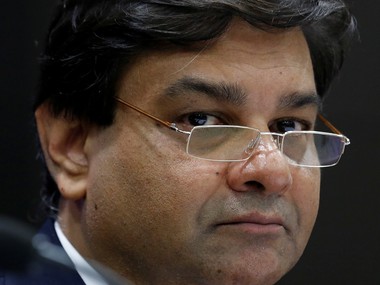Most economists expect a status quo on the Reserve Bank of India’s key lending rate, repo rate, when the Monetary Policy Committee (MPC) unveils its first bi-monthly monetary policy of this fiscal year on Thursday afternoon.
A slew of factors such as retail inflation rising as remonetisation picked up pace, upward bias in international prices of crude oil and other commodity prices and weak monsoon forecasts would certainly put the central bank on a caution mode. In this backdrop, it is highly unlikely that the MPC will tinker with the rates this time round.
Also, with interest rates in US trending upwards, any further cut in key policy rates here would lower the interest rate differentials resulting in capital flight. The rupee will then face pressure.
Lastly, there is no pressing need on MPC to lower borrowing costs and support economic growth if improving GDP growth figures offer any clue. A pause mode is the most likely scenario. All of these factors show that the change in MPC’s monetary policy stance from ‘accommodative’ to ‘neutral’ turned out to be a right move, at least looking at the data so far.
But, it is not the rates but RBI governor Urjit Patel’s comments on three other critical issues that matter on Thursday.
For one, will there be a road map to tackle bad loans?
Total bad loans in the banking system (42 listed banks) are now around Rs 7 lakh crore. Of this, about 88 percent is on the books of state-run banks. The early recognition of stressed assets and clean-up exercise initiated by the RBI in 2015 has surely brought the debate on hidden NPAs into the public arena but experts argue that it hasn’t offered any solution as far as the resolution of sticky loans are concerned.
| Banks with higher gross NPAs |
|---|
| Bank |
| I O B |
| St Bk of Patiala |
| UCO Bank |
| United Bank (I) |
| IDBI Bank |
| Bank of Maha |
| Dena Bank |
| St Bk of Hyderab |
| St Bk of Mysore |
| Central Bank |
| as on 31 December 2016 |
There are discussions on proposals such as the creation of a bad bank but largely both the government and the RBI do not seem to have a clear picture on how to address the problem. The central bank’s policy statement will be watched for road map on the subject.
Secondly, will Patel announce further tools to manage liquidity in the banking system?
Post demonetisation, banks are flush with deposits most of which have gone to government bonds in the absence of credit demand. RBI data tells us that while there is a sharp surge in deposits, a corresponding increase in credit offtake to productive sectors is absent so far. The RBI’s observations on monetary transmission and response of the banking system to the measures taken by the central bank so far will be looked at in the policy. The RBI might want banks to focus more on lending to productive sectors and improve transmission of policy cues so far.
Thirdly, will Patel offer the details on how much old currency has been deposited in banks/RBI counters after the demonetisation was announced on 8 November?
These numbers are due from the central bank. About Rs 15.4 lakh crore currency, which constitute about 86 percent of total currency in circulation, was scrapped on 8 November. With the last window for old currency deposits at RBI counters too coming to a close at end-March, questions will be raised on the final count on how much money has ultimately come back to banks since the launch of demonetisation.
Over to governor Patel.


)




)
)
)
)
)
)
)
)